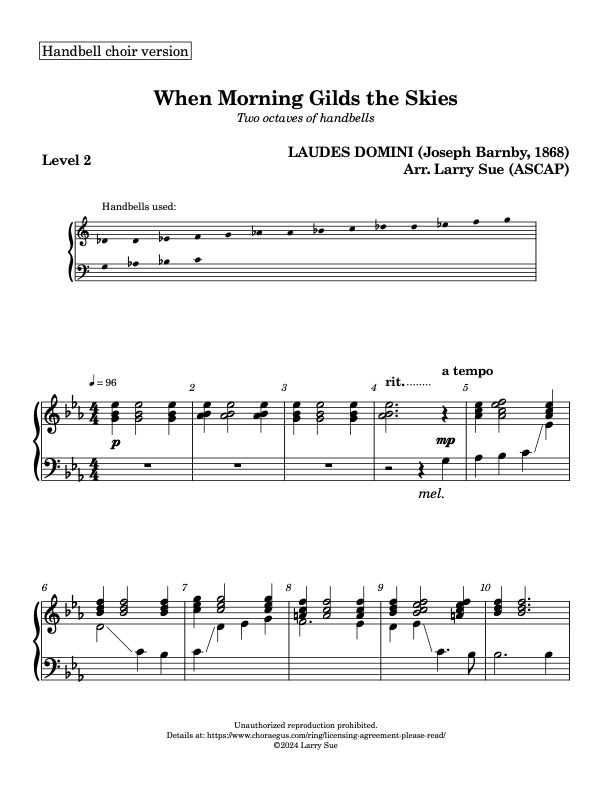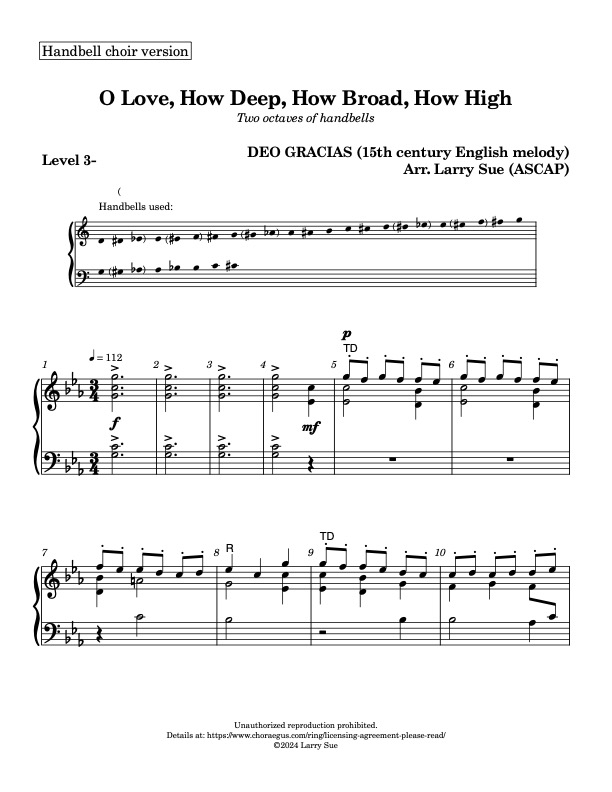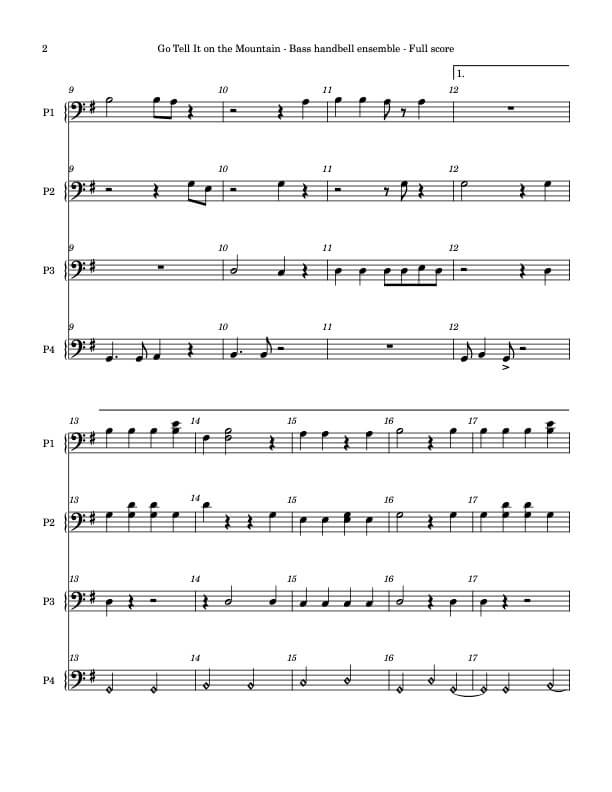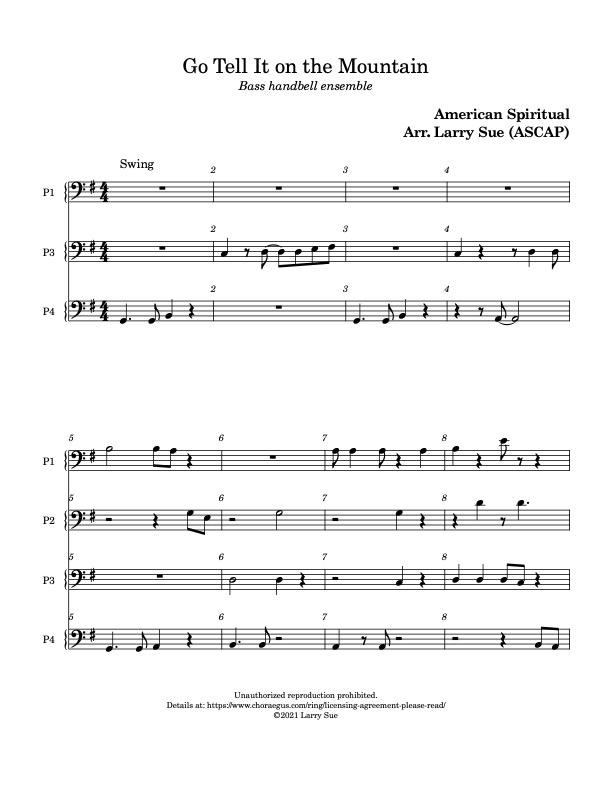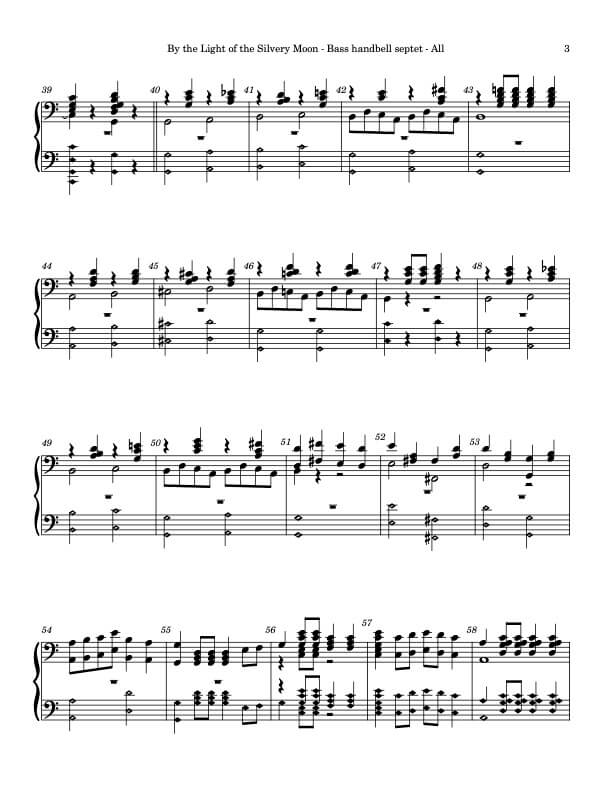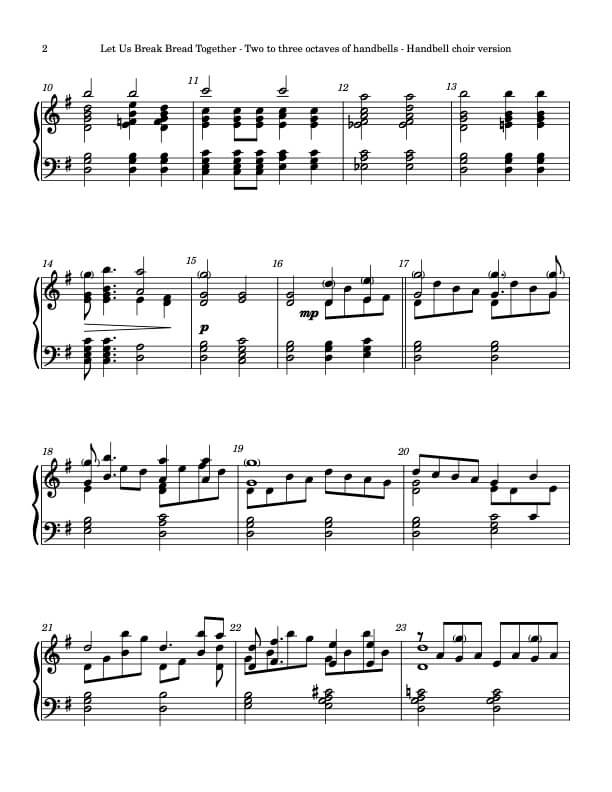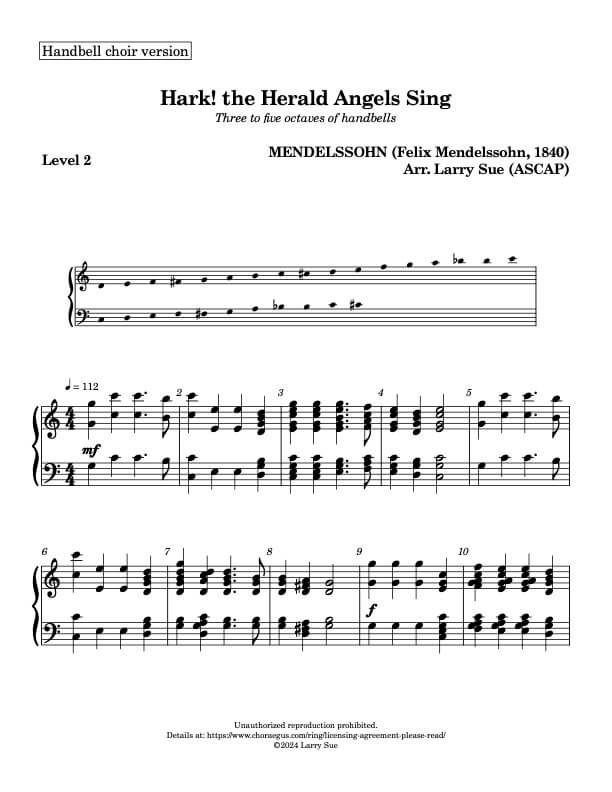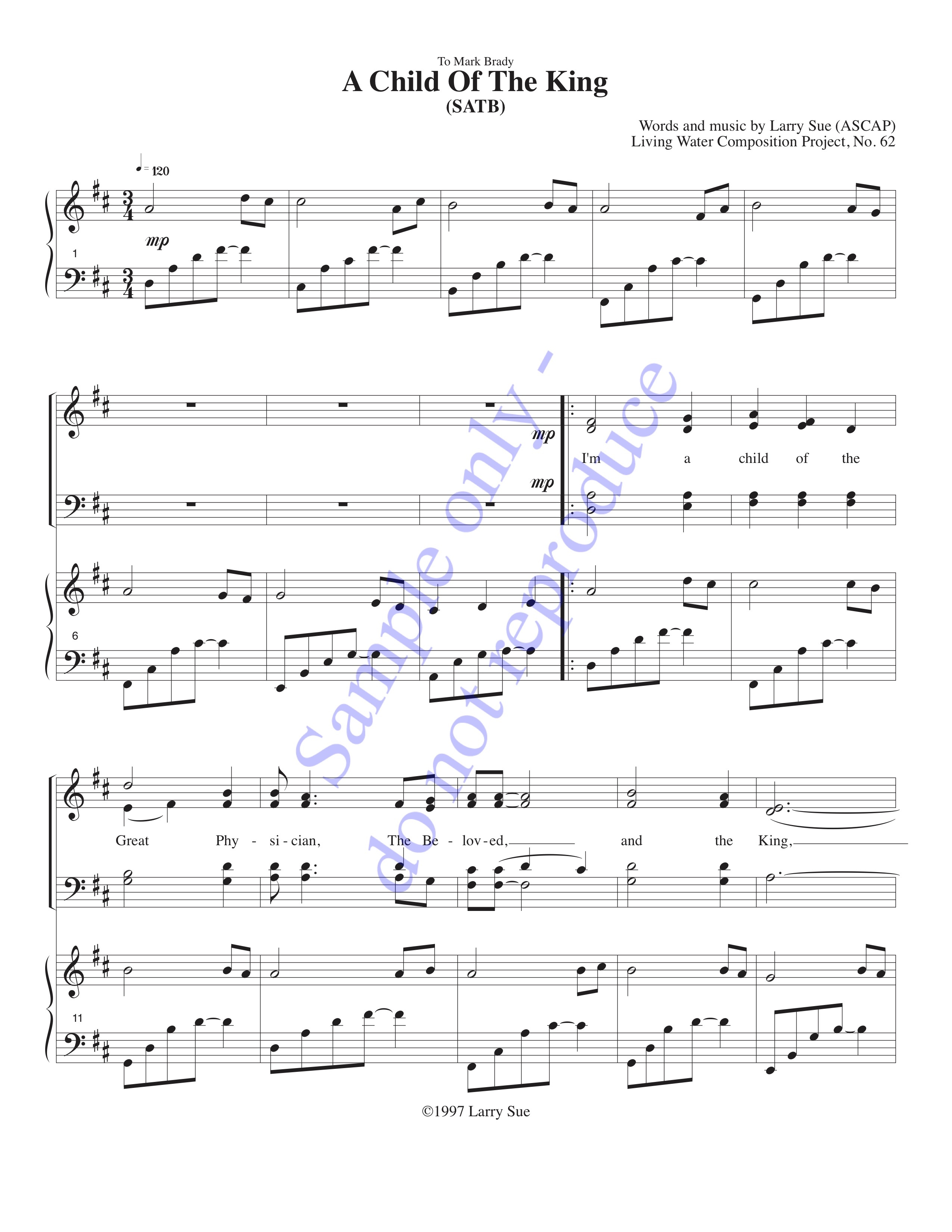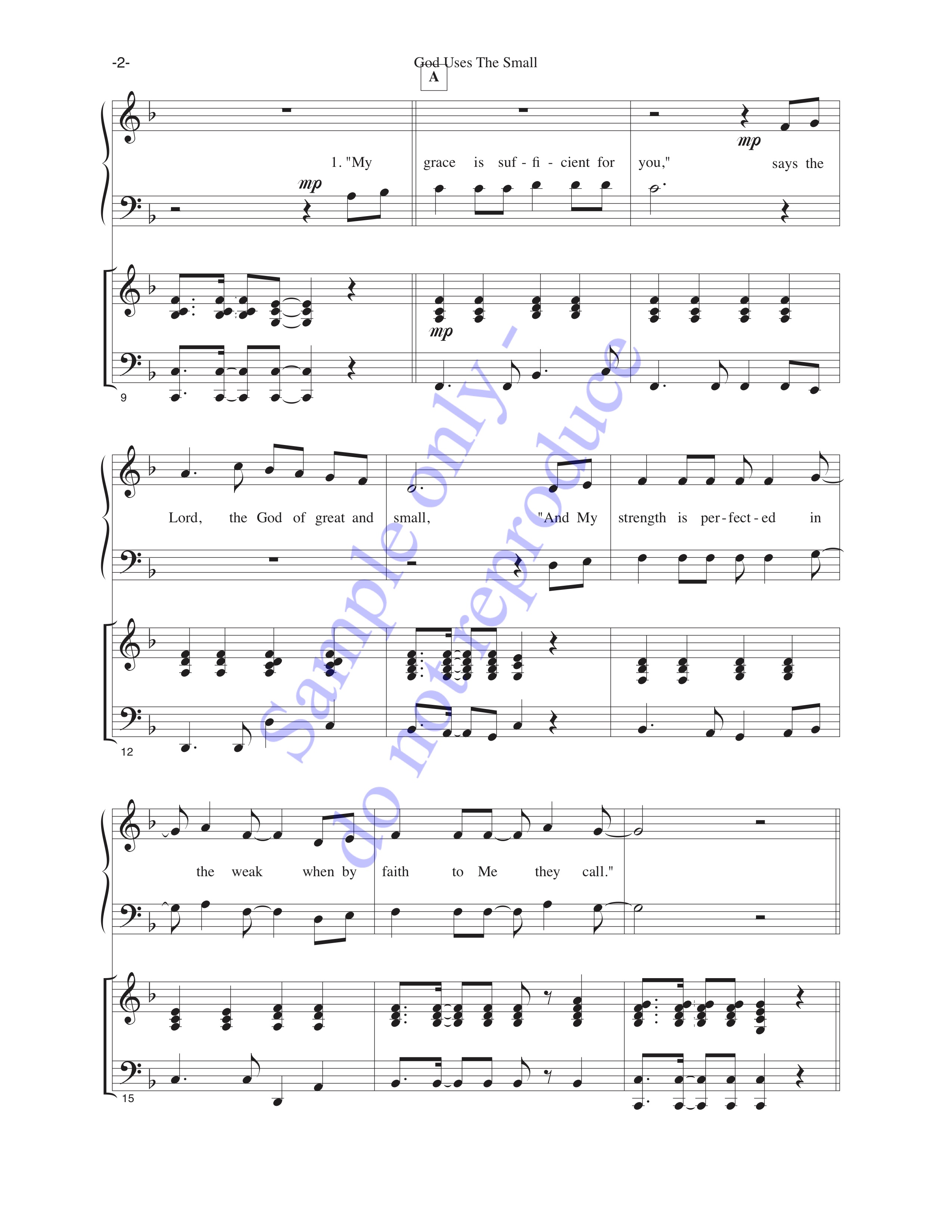The birth of the Christ Child has been an occasion for great joy for centuries. Go Tell It on the Mountain gives us both the command to proclaim the coming of the Savior as well as a song by which to declare it. Go, tell it on the mountain, over the hills and everywhere; go, …
Tag: 3 octaves
Smaller handbell choirs typically have two to three octaves of handbells. The range means that just about every chord can be filled in to the lowest available note without creating objectionable interactions between low notes.
Oct 05
Angels, from the Realms of Glory (REGENT SQUARE) (Handbells, 3 octaves, Level 2)
Angels came from heaven to celebrate the birth of Christ. It’s amazing to compare how it must have been in God’s glorious presence with the humble stable of Bethlehem. Yet they came, and they marveled! This new arrangement for three octaves of handbells is perfect if you have a relatively novice group, or if you …
Angels, from the Realms of Glory (REGENT SQUARE) (Handbells, 3 octaves, Level 2)
Angels came from heaven to celebrate the birth of Christ. It’s amazing to compare how it must have been in God’s glorious presence with the humble stable of Bethlehem. Yet they came, and they marveled! Angels from the realms of glory / Wing your flight o’er all the earth; Ye who sang creation’s story / …
Sep 26
Lo, How a Rose E’er Blooming (ES IST EIN ROS’) (Handbells, 3 octaves, Level 1)
Lo, How a Rose E’er Blooming dates back to sixteenth-century Germany. Its lyric combines the image of Jesus Christ as the Rose of Sharon and the Root of Jesse, plus the traditional impression of celebrating Christmas in winter. It was translated to English by Theodore Baker in the nineteenth century. Our arrangement for three octaves …
Lo, How a Rose E’er Blooming (ES IST EIN ROS’) (Handbells, 3 octaves, Level 1)
Lo, How a Rose E’er Blooming dates back to sixteenth-century Germany. Its lyric combines the image of Jesus Christ as the Rose of Sharon and the Root of Jesse, plus the traditional impression of celebrating Christmas in winter. It was translated to English by Theodore Baker in the nineteenth century. Lo, how a Rose e’er …
Angels We Have Heard on High (GLORIA) (Handbells, 3 octaves, Level 2-)
Angels We Have Heard on High is based on the nineteenth-century French song Les Anges dans nos Campagnes and is traditionally sung to the hymn tune GLORIA. The lyric tells us of how the angels came from heaven to celebrate the birth of the Christ Child. Our three-octave handbell arrangement is a very accessible Level …
Jul 24
Infant Holy, Infant Lowly (Handbells, 3 octaves, Level 2)
Every Christmas bring the wonder of the Christ Child in the manger – it’s the mystery of God coming to live among us on earth. Here’s our new arrangement of Infant Holy, Infant Lowly for three octaves of handbells. It also works really well on chimes! Infant holy, infant lowly, for his bed a cattle …
Infant Holy, Infant Lowly (Handbells, 3 octaves, Level 2)
Every Christmas bring the wonder of the Christ Child in the manger – it’s the mystery of God coming to live among us on earth. Infant holy, infant lowly, for his bed a cattle stall; oxen lowing, little knowing Christ the babe is Lord of all. Swift are winging angels singing, noels ringing, tidings bringing: …
Jul 05
Jingle Bells (Handbells, 3 octaves, Level 3-)
James Murray wrote Jingle Bells in 1857. We understand that it actually was a Thanksgiving song for a children’s play at his church… but history has made it into a Christmas song. That probably makes sense since December is snowier than November in most areas (well… if you’re far north enough). Our arrangement for three …
Jingle Bells (Handbells, 3 octaves, Level 3-)
James Murray wrote Jingle Bells in 1857. We understand that it actually was a Thanksgiving song for a children’s play at his church… but history has made it into a Christmas song. That probably makes sense since December is snowier than November in most areas (well… if you’re far north enough). Dashing through the snow …

